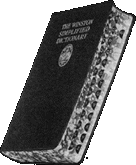|
When a database is created, a data
dictionary is kept which stores all the details about the database -
- the names of the tables
and their fields.
- data types of
all the fields
- any field formatting
information
- field validation
details.
- any relationships
between the tables.
|
 |
|

|
A query language
is used when a user wants to search data. An example of a query language
is SQL (Structured Query Language).
An example SQL instruction would be :
SELECT Pupil.Surname, Pupil.Forename, Pupil.Frm, Pupil.Yr
FROM Pupil
WHERE (((Pupil.Frm)="G") AND ((Pupil.Yr)="12"));
|
|
|
The DBMS (Database
Management System) is a program which allows the user access to data.
It must...
- allow users to create
and edit the data and provide facilities
to search the data using a query
language.
- allow other applications
to use the data.
- create and maintain the data
dictionary
- maintain the integrity
of the database. On a multi-access system, this is done by locking
a record or table when a user is editing it. This means that another user is
unable to edit it at the same time. When the data is saved it is unlocked.
- check passwords of
individual users and only allow that user access to certain parts of the
database.
- ensure that recovery
is possible if the database is corrupted.
The database
administrator is the person responsible for
maintaining the database, including...
- designing the database
- keeping users informed of changes
- maintenance of the data dictionary for the database
- implementing database security measures
- allocating passwords
- providing training to users
- ensuring adequate backup procedures.
|
|



